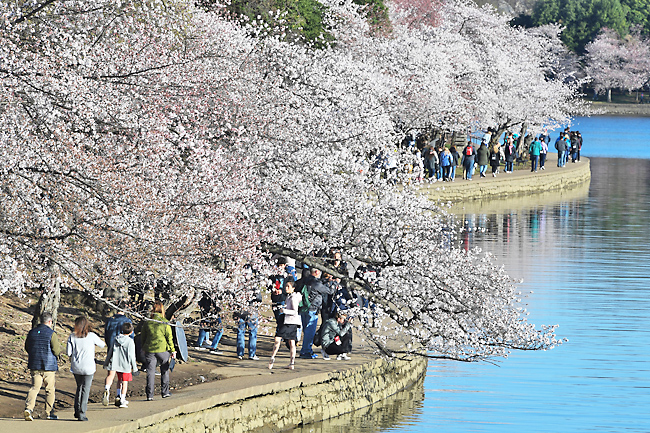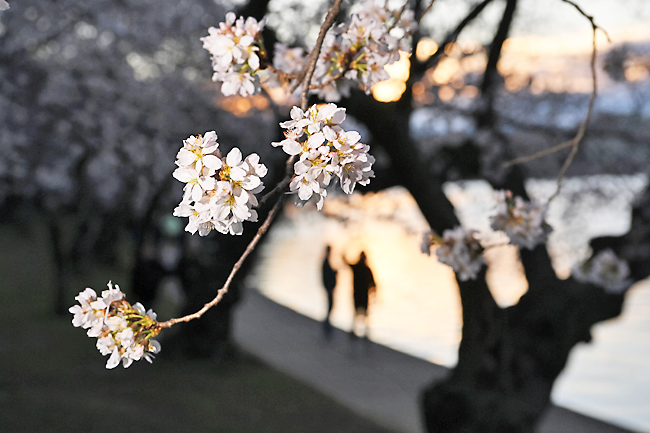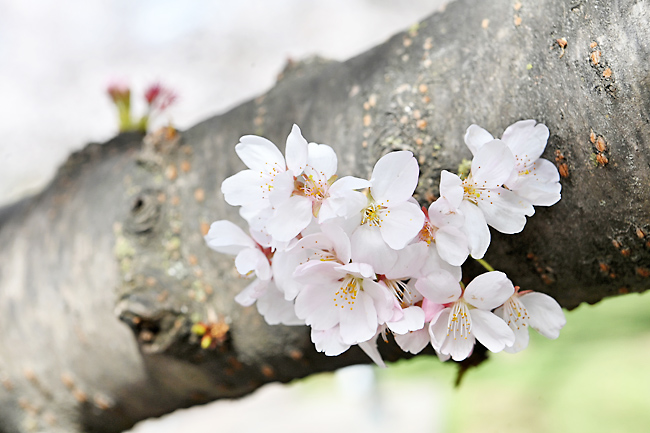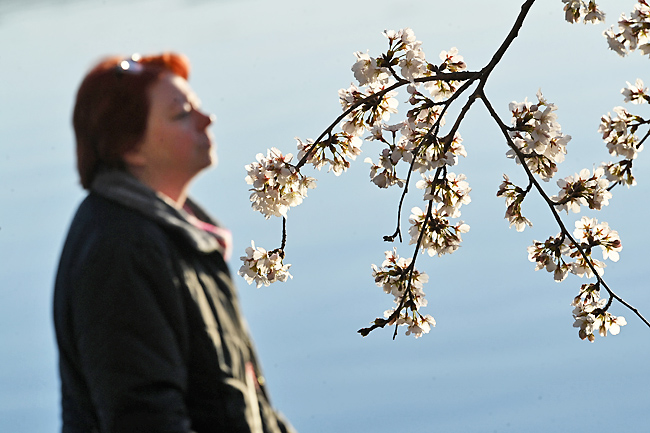THE WASHINGTON POST – The blossoms beckoned. For the last two years, Taylor Busse, a newly minted nurse in Indianapolis, has marked time in pandemic surges.
She enrolled in nursing school in January 2020 just before coronavirus overtook the nation. A year later, she started working as a patient care tech during the first winter surge in a hospital crammed with COVID-19 patients. Next came the Delta variant, after Busse’s graduation in May 2021.
Winter heralded itself with the somewhat milder but ferociously contagious Omicron wave.
On short-staffed days when Busse felt exhausted, she sustained herself with the knowledge that she was saving lives. But she knew she needed a break to help her feel human again.
On a recent Monday, Busse spread out a colourful cloth on a patch of ground with a commanding view of the Potomac Tidal Basin ringed with shimmering cherry trees. She stretched her legs out, smoothed her long red hair back from her face and tilted her head toward the sun.
“Obviously, it’s almost spring literally right now, but it also feels like the spring of COVID,” Busse, 25, said. “We’re coming out of winter. You feel the sun, and you feel so awake and alive.”




Barely an hour later, the National Park Service announced that the cherry trees had reached peak bloom – the point at which 70 per cent of the buds are flowering. The blossoms will be here to behold for a week or so before they are gone.
Busse was joined by thousands of people from around the region, the country and the world who are swarming the Tidal Basin for the National Cherry Blossom Festival, sprawling beneath bowing branches and sitting in contemplation on the basin’s banks.
There was much to contemplate, after two years of sickness, isolation and death that had cancelled one of Washington’s signature events – which drew 1.6 million people in 2019. Even so, the symbolism of the cherry tree, rooted in the theme of the transience of life, is made for this pandemic moment.
Around the gently curving Tidal Basin, Geoffrey Axe, 72, rested against the gnarled trunk of an old cherry tree. A journal with the title The Story of My Life rested on his knee.
Axe had travelled from suburban Philadelphia with his daughter, Jennifer, that morning to experience the blooming cherry trees.
His wife Teresa had died of a pulmonary embolism at 69 in January 2021, an event he was forced to witness from a distance in the hospital. So many people were dying that it took six months to get a headstone.
In the meantime, Jennifer Axe, a 42-year-old obstetrician, jumped into the giant breach left by her mother, who had been the family planner. She began scheduling events: walks in public parks, an obstacle race to promote breast cancer awareness, sledding when it snowed.
“There’s an old Blues line: ‘You don’t miss the water until the well runs dry’,” Geoffrey said. By this time, his daughter had returned from a solo jaunt along the basin. She sat down next to her dad.
Like her mother, the time before the pandemic “was normal life and you don’t expect it to go away”, Jennifer said.
“And then it vanishes, and everyone becomes locked in their own solitude,” Geoffrey said quietly.
He felt the symbolism of the cherry trees in the moment. “It’s an ephemeral beauty,” he said.
“The blossoms open and within a short period of time, they are done. The trees are still here, but the blossoms are no longer. But fortunately, they come back every year.” Around the basin curve again, not far from where Busse was sprawling, a young Black woman in a striking, long pink flowered kimono smiled beatifically, an antidote to lingering pandemic sadness.
Lianne St Jules, a 32-year-old from Gaithersburg Maryland, had lost no person dear to her to COVID. She quit her job, then relished the time spent at home, keeping guard over her health. But there was one thing she did miss: attending the Cherry Blossom Festival.
St Jules became so enraptured by Japanese culture that she joined the Japan-America Society of Washington DC and paid for lessons from a Japanese sensei, or teacher, in the proper way to wear a kimono. She has a clear preference for the casual Yukata, made of unlined, summer-weight fabric with shorter sleeves.
“I didn’t want to go into formal kimono because of how much I run around. The more formal your kimono gets, the less you move,” said St Jules.
She appears to be one of those rare humans who does not need to experience tragedy to drink in every moment.
“The present is a gift,” she said. “Every day of your life should be a celebration…We are only here for so long and you never know when it’s going to end.”
For Ro Sood and Natasha Sidhu, the festival marked the beginning of what they hope will be the rest of their lives together.
A growth manager at a small start-up in the San Francisco Bay area Sood, 35, saw his opportunity when Sidhu was scheduled to speak at a conference in Baltimore before beginning her medical residency in psychiatry.
DC is one of their favourite cities, he said, so it was easy enough to tag along. In late February, Sood started compulsively checking cherryblossomwatch.com to find the perfect day to carry out his plan. He purchased a round-cut diamond solitaire and hired a photographer to scope out an ideal spot.
The couple had known each other since they were children and began dating a few years ago. Cooped up in their parents’ houses, which happened to be just a mile apart, their deepening love for one another was an unexpected pandemic gift.
Sidhu, 32, observed the way Sood was quick to pick up on their parents’ needs without being asked. “I learned that he is deeply loyal and makes sure his family is taken care of,” Sidhu said.
Sood admired Sidhu’s gift for nurturing plants. “She has such a caring hand,” he said.
So a proposal in nature made delightful sense. As the expected peak bloom day of March 23 approached, Sood suggested they visit the Tidal Basin to view the cherry trees.
After a bit of a detour to explore, the couple wound up at the predetermined cherry tree.
Sidhu bent to pet two passing dogs and when she rose and turned around, Sood was on one knee, looking up at her.
“She had a huge smile on her face,” Sood said. “I didn’t have to say anything. She just held my face and said ‘Yes’.”
The photographer snapped away, along with a Post photographer who stumbled upon the moment.
In the evening, the newly engaged couple returned for one last glimpse. The cherry trees looked almost translucent as the setting sun shone through their delicate petals. The Potomac glittered.
As they flew home, the image would linger indelibly in their minds. In a matter of days on the Tidal Basin, the petals would begin their gentle fall to the ground.






